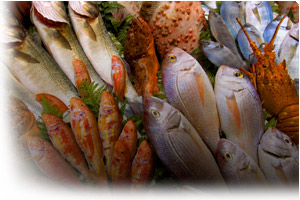
- FISH SHELL ALIASES HOW TO
- FISH SHELL ALIASES UPDATE
- FISH SHELL ALIASES FULL
- FISH SHELL ALIASES WINDOWS
FISH SHELL ALIASES FULL
It works slightly different and will actually expand the abbreviated command to the full command in the command line, and then fish will have no problem giving you all the auto-completion suggestions that it knows.

Serves as an alternative to alias and does just that.įish also offers an abbr command. You can use the complete command to tell fish that your alias uses the same completions as the aliased command. This specific case is an exception because the function and the original command have the same way, but otherwise, here are two ways to get completions anyway: Note that usually aliases will not get you the nice auto-complete suggestions that contribute to _fish_'s friendliness. I would also recommend to pass any arguments (stored in $argv) to the aliased command.Īnd to do all this with a simple command, you can simply use the alias command.

For know more about this tool, you can consult the article written in the Wikipedia.What you're looking for is the command command.
FISH SHELL ALIASES HOW TO
This was a small guide example of how to create our own aliases to run frequently used commands. If you want to ease your interactive use, to save typing, consider using an abbreviation instead. For other uses, it is recommended to define a function. It has similar syntax to POSIX shell alias. bash_aliases file.Īnother thing to keep in mind is that if we have a permanent alias and we add a temporary one during the session with the same name, the temporary will have higher privileges during the current session. alias is a simple wrapper for the function builtin, which creates a function wrapping a command. To permanently remove one, we must remove the appropriate entry in the ~ /. Keep in mind that the unalias command also applies only to the current session. In case of wanting remove all alias definitions, we can execute the following command: unalias -a To withdraw from your remove an alias added via command line, you can use the unalias command. To apply the changes immediately we can use the following command: We will be able to have a separate file called bash_aliases to store them.Įveryone we create in that file will work the next time we open a new terminal. To define a permanent alias you just have to follow the instructions that the bashrc file shows us. We will also be able to have our aliases in a separate document. If you want to use what you just wrote in the current session, run the following command: source ~/.bashrc This file will be uploaded automatically in your next session.

FISH SHELL ALIASES UPDATE
For organizational purposes, you can leave a comment before:Īlias imagenes=”cd /home/sapoclay/Imágenes/”Īlias actualizarsistema=”sudo apt update & sudo apt upgrade” A good place to add them is usually at the end of the file. Inside the file, find a place in the file to save the aliases. bashrc file with your favorite editor: vim ~/.bashrc So for example in bash, you can open the. Perhaps its best to hold off on doing this until you become convinced that fish is for you.
FISH SHELL ALIASES WINDOWS
The only difference comes from the fact that this time we will save it to a file. To make fish the default shell so new terminal windows automatically use it, enter chsh -s /usr/local/bin/fish.This assumes that the path to fish is included in the file /etc/shells which is the case when standard installers are used. The syntax to use in this case is the same as when we create a temporary one. To keep the aliases between sessions, you will have to save them in the profile file for your user's shell configuration. If you want to save them between sessions, you will need a permanent one. If you open a new terminal session, the alias will no longer be available. The problem with this shortcut is that will only be available for your current terminal session. A fish alias is actually implemented as a function. Once defined we will be able to use the 'htdocs' shortcut to go to the htdocs directory. This would be a real example: alias htdocs=”cd /opt/lampp/htdocs” The syntax to follow is the following: alias nombreAlias="tu comando personalizado aquí" This will be followed by the '=' sign and the call to the command we want to use. Then we will have to use the name that we want to use to execute a command. What we have to do is write the word alias in the terminal. Anyone can create some of these two types: temporary and permanent. How to create aliasesĬreating them is a relatively quick and easy process. It will be the equivalent of a command of our choice. We will be able to create one of these links with a single character. As indicated in the screenshot, executing in the terminal (Ctrl + Alt + T) the command « la»Would be the equivalent of running: ls -A Here you can see the User defined default aliases in Ubuntu 18.04. bashrc file that is in the Personal Folder, in a hidden way.įirst of all, we will be able to see a list defined in our profile just running this command in terminal (Ctrl + Alt + T): This tool is already installed by default in our Ubuntu.


 0 kommentar(er)
0 kommentar(er)
